
The SET 7 was a military trainer and reconnaissance aircraft that was produced in Romania in the mid-1930s. It was originally designed as a conventional single-bay biplane, with slightly staggered wings, a standard undercarriage with fixed tailskid, and a tandem open-cockpit arrangement for the pilot and instructor or observer. Power was supplied by an Armstrong Siddeley Jaguar radial engine, and from the outset the aircraft was equipped for wireless and photographic reconnaissance duties.

The SET 10 was a trainer aircraft produced in Romania in prototype form in the early 1930s. It was a conventional, single-bay biplane with staggered wings braced with N-struts. It was equipped with fixed tailskid undercarriage, and seated the pilot and instructor in tandem, open cockpits. Intended for Romania's aeroclubs and Air Force, no production ensued.
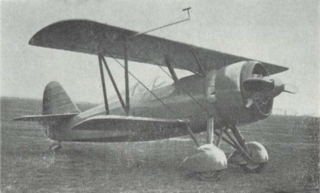
The SET XV was a fighter aircraft developed in Romania in the mid-1930s. It was a conventional single-bay biplane with staggered wings of unequal span braced by N-struts. It was fitted with fixed tailwheel undercarriage with spatted mainwheels. The cockpit was fully enclosed, and the engine was fitted with a NACA cowl. Construction throughout was fabric-covered metal.

The ICAR 36 / ICAR Comercial (sic), variously also known as the ICAR M 36, Messerschmitt M 36 or BFW M.36, was a Messerschmitt design built and tested by the Romanian company ICAR in the mid-1930s. It was a small, single-engine high-wing airliner, the first civil transport aircraft built in Romania.

The IAR CV 11 was a Romanian fighter prototype in 1930, designed by Elie Carafoli, and it was IAR's first original aircraft.

The IAR-22 was a single engine basic trainer built in Romania in about 1934. It was a low-wing monoplane with two seats in tandem and a fixed conventional undercarriage.

The IAR 27 was a 1930s Romanian two-seat low-wing monoplane primary trainer designed and built by Industria Aeronautică Română.
The IS-3 was the basis of a family of high performance gliders designed by Iosif Şilimon and built in Romania in the 1950s at the URMV-3 factory at Braşov.
The IS-2 was an intermediate training glider designed by Iosif Şilimon and built in Romania in the 1950s at the URMV-3 factory at Brașov.
The IS-4 was a high performance glider designed by Iosif Şilimon and built in Romania in the late 1950s at the URMV-3 factory at Braşov.

The SET 2 or Proto-SET 2 was a 1920s Romanian prototype reconnaissance and day-bomber aircraft.
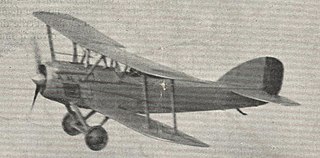
The Astra-Protopopescu or Astra-Proto was a Romanian reconnaissance aircraft flown and tested in 1925.
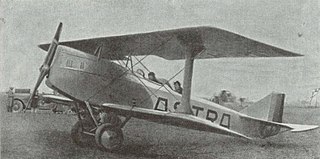
The Astra-Șeșefschi was a two-seat Romanian reconnaissance aircraft designed and built in 1923.
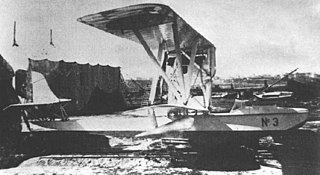
The RAS-1 Getta was a flying boat produced in Romania during the 1920s.
The IAR-818 was a Romanian multipurpose aircraft based on the IAR-817. It was developed by IAR in both landplane and floatplane forms.
The IAR-817 was a Romanian multipurpose aircraft built in the 1950s.

The IAR-811 was a Romanian trainer aircraft built in the late 1940s. It was the first aircraft designed and built in Romania following the end of the Second World War.

The IAR-814, aka MR-2, was a Romanian designed and built twin-engined trainer aircraft built in the early 1950s, the first twin-eninged aircraft wholly designed and built in Romania.
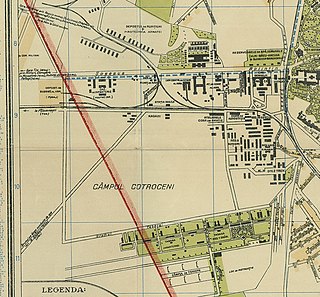
Arsenalul Aeronautic in Bucharest was the first factory with an aeronautical profile in Romania. Its activity took place between 1919 and 1939. Arsenalul Aeronautic manufactured three models of aircraft: Hansa-Brandenburg C.I, Proto 1 and Aeron and modified De Havilland aircraft for passenger and freight transport. Also, at the Aeronautical Arsenal, research in the field of study and testing of materials was organized.

Proto 1 was a training biplane designed by Major Ștefan Protopopescu in collaboration with Dumitru Baziliu and Gheorghe Ticău at Arsenalul Aeronautic in Bucharest in 1922. It was the first Romanian airplane to be built in a specialized enterprise.
















